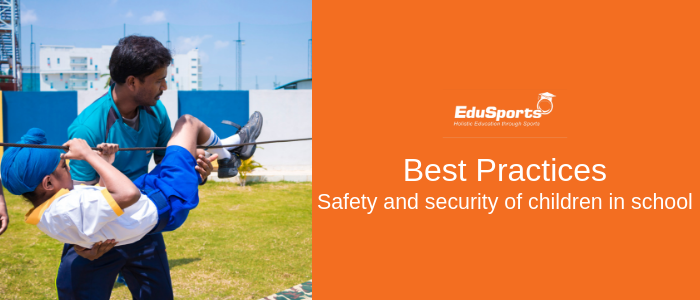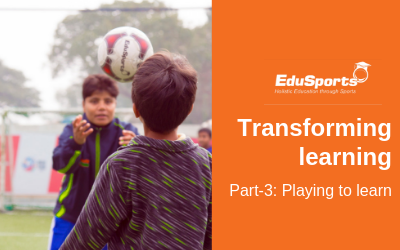“To succeed is to have failed” – learning from failures

Best Practices – Safety and security of children in school
Safety and Security of Children in School
Schools are primarily learning spaces, which are safe, secure and stimulating for children to explore, be curious and gain skills and knowledge. In recent times, the safety and security aspects have been thrown into serious question, given incidents of sexual abuse, which question the basic level of safety in schools.
For large schools which have extensive campuses, buildings, facilities, specialized classrooms and sports complexes, ensuring safety of children is a huge challenge.
We recognize that safe schools begin with a culture of safety, that promotes routines, processes and practices that are geared to prevent incidents. Empowering individuals – children, teachers and parents with the required knowledge, awareness and tools to keep safe are important steps for schools to achieve the highest levels of safety.
In our work in interacting with schools, we are able to observe good practices that are followed in some schools as well as glaring gaps that emerge in others. While every school leader places high emphasis on safety, the sustainable safety of children is a tall order. Every school is unique with reference to its physical configuration and processes and hence must develop its own code of security for children. We share here some of the best practices we have seen in schools, with the hope that it helps enhance the current practices and throws open the best ideas for discussion.
ENVIRONMENT: It is important that we empower children and help them take charge of their own safety. Here are some ways to do so:
• Restricting access points to ensure only authorized persons enter school premises. For external partners, give authorization pass or access cards to specific individuals
• Establishing protocols for movement of students between classrooms and other facilities
• Assigning supervisory responsibilities to staff to man corridors and other areas during recesses, breaks and non-class hours
• Involve parents in the safety effort
• Ensure school safety guidelines are communicated to all and reviewed from time to time• Encourage open and free discussion between students and teachers
• Encourage buddy systems if possible for older children to watch over younger ones. Or form triads – groups of three amongst children to keep track of one another at all times.
ENVIRONMENT: The following guidelines have proven effective in making the school environment safer:
• Teach children about “good” and “bad” touch. Sessions in smaller groups are more effective and regular refreshers are needed to reiterate the messages
• Rather than making children obey without exception, teach them to avoid interactions with strangers. They can be guided to reach out to an older person they trust when faced with potentially threatening or inappropriate behaviour
• In some situations, it is better to train children to use techniques like ‘Stun and Run’ rather than attempt a fight which places them in a vulnerable positio
• Establish escalation methods that give every child easy access to a trusted adult to openly share their issues.
• Rope in parents and educate them on the school’s safety norms
• Screen and evaluate extended network such as van/ bus drivers, attendants who may need to enter the school to drop or pick up wards.







